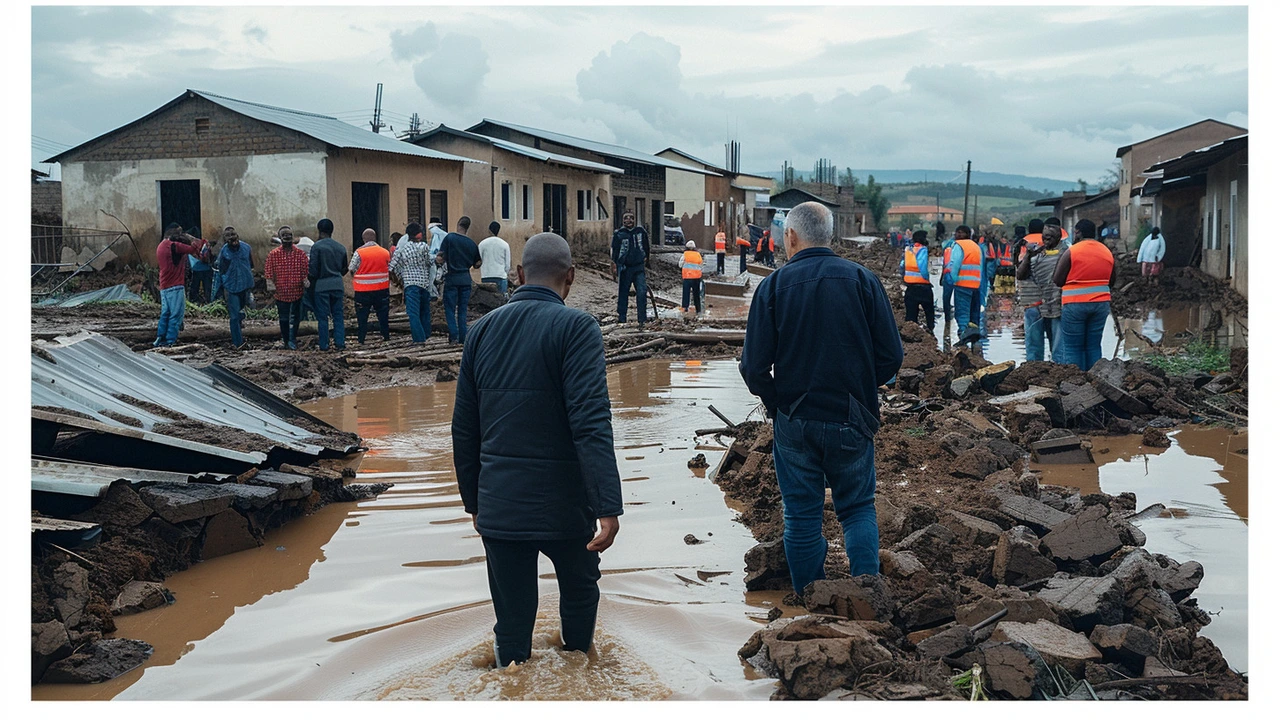President Ruto Calls for Immediate Evacuation in Flood-stricken Regions
On a recent visit to Mai Mahiu in Nakuru County, President William Ruto confronted the severe reality faced by flood victims in Kenya. With the region battered by consistent rainfall, the president issued a dire warning and a plea for citizens residing in flood-prone and landslide-prone areas to relocate to safer grounds. This call to action comes amidst reports of escalating risks due to the ongoing bad weather conditions.
Overview of the Crisis
Kenya, known for its diverse geographical landscape, from its highlands to its valleys, faces a periodic yet severe challenge with flooding, especially during heavy rainfall seasons. The recent weeks have seen an increase in rainfall, causing rivers to overflow and landslides in several regions. These disasters pose a significant threat to the lives and property of the local populace. In response, a multi-agency team comprising security agencies and the military has been organized to accelerate the evacuation process and ensure public safety.
Details of the President's Visit and Actions Taken
During his visit, President Ruto inspected ongoing search and rescue operations spearheaded by courageous local and national agencies. The president emphasized the importance of timely evacuations and highlighted the government’s resolve in mitigating the impacts of such natural disasters. He announced that recent mappings of the region had shown that many residents are critically endangered by the continued heavy downpours.
- Understanding the specified risk zones requiring evacuation.
- Mobilization of resources including emergency shelters and medical assistance.
- Continuous monitoring and assessment of weather patterns.
Through these efforts, President Ruto reassured the community of the government's preparedness to tackle the ongoing crisis and to facilitate a smooth and coordinated evacuation process.
Critical Analysis of the Evacuation Plan
The challenges posed by such large-scale evacuations are immense. Logistical coordination, readiness of shelters, and effective communication channels are essential components that need to be addressed. The involvement of the military underscores the seriousness of the situation and the necessity for an orderly evacuation. Key to the success of these efforts is the collaboration between governmental bodies and local communities to ensure a transparent and effective process.
Looking Forward: Strategies for Future Disaster Preparedness
Moving forward, Kenya’s disaster response strategy may benefit from a focus on sustainable development practices that consider environmental conservation and urban planning to mitigate such risks. Enhancing community awareness and building local capacities for disaster responsiveness will also be crucial. Investing in infrastructure that can withstand extreme weather and creating comprehensive risk management plans are recommended.
Conclusion
In summary, the situation in Kenya calls for immediate action and cooperation among all stakeholders. President Ruto’s proactive engagement and the ongoing efforts of the emergency teams offer a crucial lifeline to those affected by the floods. However, a long-term vision for national disaster preparedness and response is vital to ensuring the safety and well-being of Kenyan communities in the years to come.
